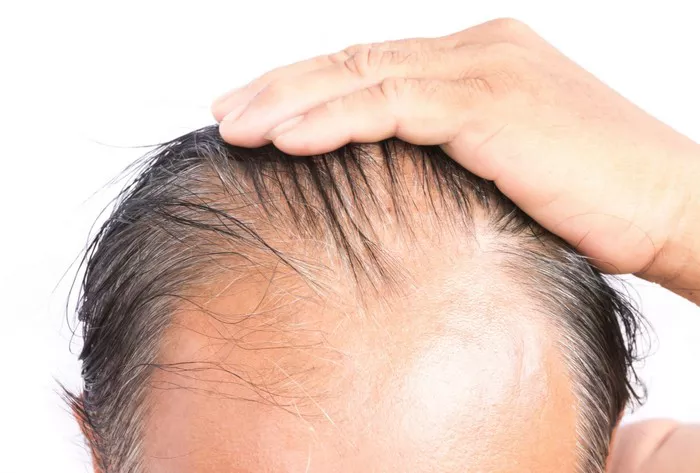Hair loss, or alopecia, is a distressing side effect that many cancer patients face during treatment. This physical manifestation of the battle against cancer can be emotionally challenging and deeply impact one’s self-esteem and identity. However, it’s crucial to understand that hair loss during cancer treatment is not caused by the cancer itself but rather as a result of the treatments administered to combat it, such as chemotherapy and radiation therapy.
Clarify the Cause
Hair loss during cancer treatment, commonly referred to as chemotherapy-induced alopecia or radiation-induced alopecia, occurs because these treatments target rapidly dividing cells. Unfortunately, this includes not only cancer cells but also healthy cells, including those in the hair follicles.
It’s essential to reassure patients that while losing hair can be distressing, it is usually temporary. Once treatment is completed, hair typically begins to grow back. However, it’s important to note that the regrowth process may vary from person to person, and the hair may not return to its pre-treatment state immediately.
Treatment Specifics
Different cancer treatments can affect hair loss differently. While chemotherapy and radiation therapy are the most common culprits, not all chemotherapy drugs cause hair loss, and the extent of hair loss can vary from person to person.
Chemotherapy drugs work by targeting rapidly dividing cells, which includes not only cancer cells but also hair follicles. The severity of hair loss can depend on the type and dosage of chemotherapy drugs administered. Some drugs may cause only minimal thinning, while others may result in complete hair loss, including eyebrows, eyelashes, and body hair.
Similarly, radiation therapy, while focused on specific areas of the body, can cause hair loss in the targeted area. The extent of hair loss depends on the dose and area treated.
Onset and Duration
Hair loss typically begins within a few weeks of starting chemotherapy or radiation therapy. However, the timeline can vary depending on the individual and the specific treatment regimen. Some patients may experience hair thinning gradually, while others may notice significant shedding in a short period.
As distressing as it may be, it’s essential to reassure patients that hair loss is usually temporary. In most cases, hair begins to grow back a few weeks to months after treatment completion. However, the regrowth process can be slow and may take several months to a year for the hair to return to its pre-treatment thickness and texture.
Management Strategies
While hair loss during cancer treatment may be inevitable, there are strategies to help manage its impact:
1. Gentle Hair Care: Encourage patients to be gentle with their hair and scalp. Use a soft-bristled brush and avoid harsh styling products or treatments that can further damage fragile hair.
2. Mild Shampoos: Recommend using mild, sulfate-free shampoos and conditioners to minimize irritation to the scalp and hair follicles.
3. Scalp Cooling Caps: Discuss the option of scalp cooling caps, which can help reduce blood flow to the scalp, potentially minimizing the impact of chemotherapy on hair follicles. These caps are worn before, during, and after chemotherapy sessions.
4. Wigs and Head Coverings: Offer guidance on selecting wigs or head coverings that are comfortable and realistic. Many cancer centers have resources or support groups to assist patients in finding suitable options.
5. Scalp Care: Suggest keeping the scalp moisturized and protected from the sun, especially if hair loss is significant.
Emotional Support
Hair loss can have a profound emotional impact on cancer patients. It’s essential to address these feelings and offer support:
1. Open Communication: Encourage patients to discuss their concerns and feelings with their healthcare team. Oncologists, nurses, and counselors can provide guidance and support tailored to individual needs.
2. Support Groups: Connect patients with support groups or online forums where they can interact with others who are experiencing or have experienced hair loss during cancer treatment. Sharing experiences and coping strategies can be empowering and comforting.
3. Counseling: Offer counseling or therapy services to help patients navigate the emotional challenges associated with hair loss. Therapy can provide coping mechanisms and strategies to improve self-esteem and body image.
Hair Regrowth
While regrowth is a hopeful prospect, it’s important to set realistic expectations:
1. Timeline: Inform patients that hair regrowth is a gradual process and may not occur immediately after treatment completion. It may take several months for hair to start growing back, and even longer for it to reach its pre-treatment length and texture.
2. Changes in Hair Texture and Color: Prepare patients for the possibility that their regrown hair may have a different texture or color than their pre-treatment hair. It’s not uncommon for hair to grow back thinner, curlier, or a different shade than before.
In conclusion, hair loss during cancer treatment is a common and temporary side effect caused by chemotherapy and radiation therapy. While managing hair loss can be challenging, there are strategies and support systems available to help patients cope emotionally and physically. By understanding the causes of hair loss, managing its impact, and providing emotional support, healthcare providers can empower patients to navigate this aspect of their cancer journey with resilience and confidence.


